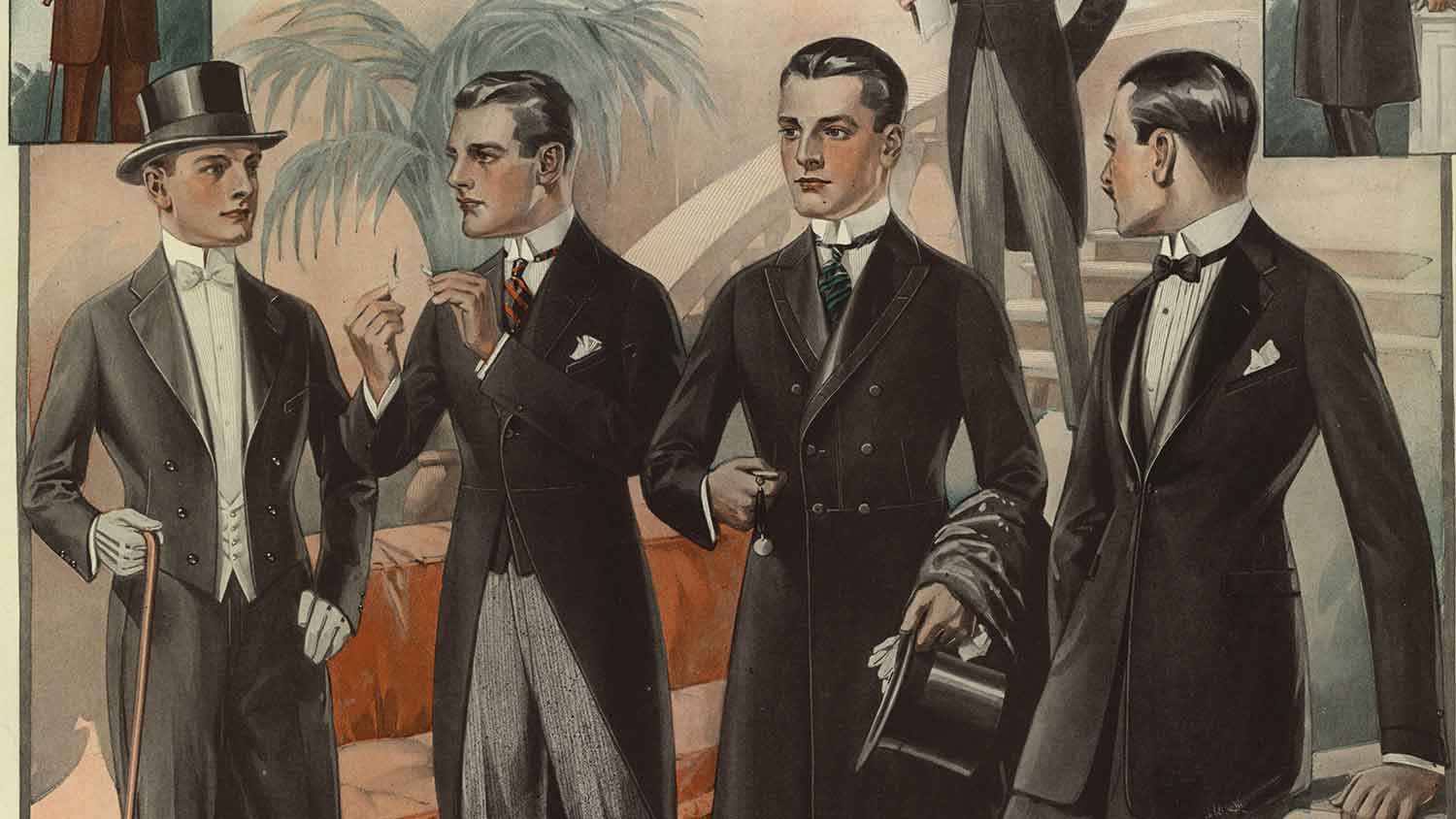
from He Spoke Style - Men's Style, Fashion, Grooming, Tips and Advice
What men really wore in the Roaring 20s
Any discussion of 1920s men’s fashion needs to start with some cultural context. The Roaring 20s were a time of great political, economic, and social change in the United States. After World War I came to an end in 1918, society started to speed up. People gained newfound freedoms, and they had money to spend on fashion, entertainment, and household goods.
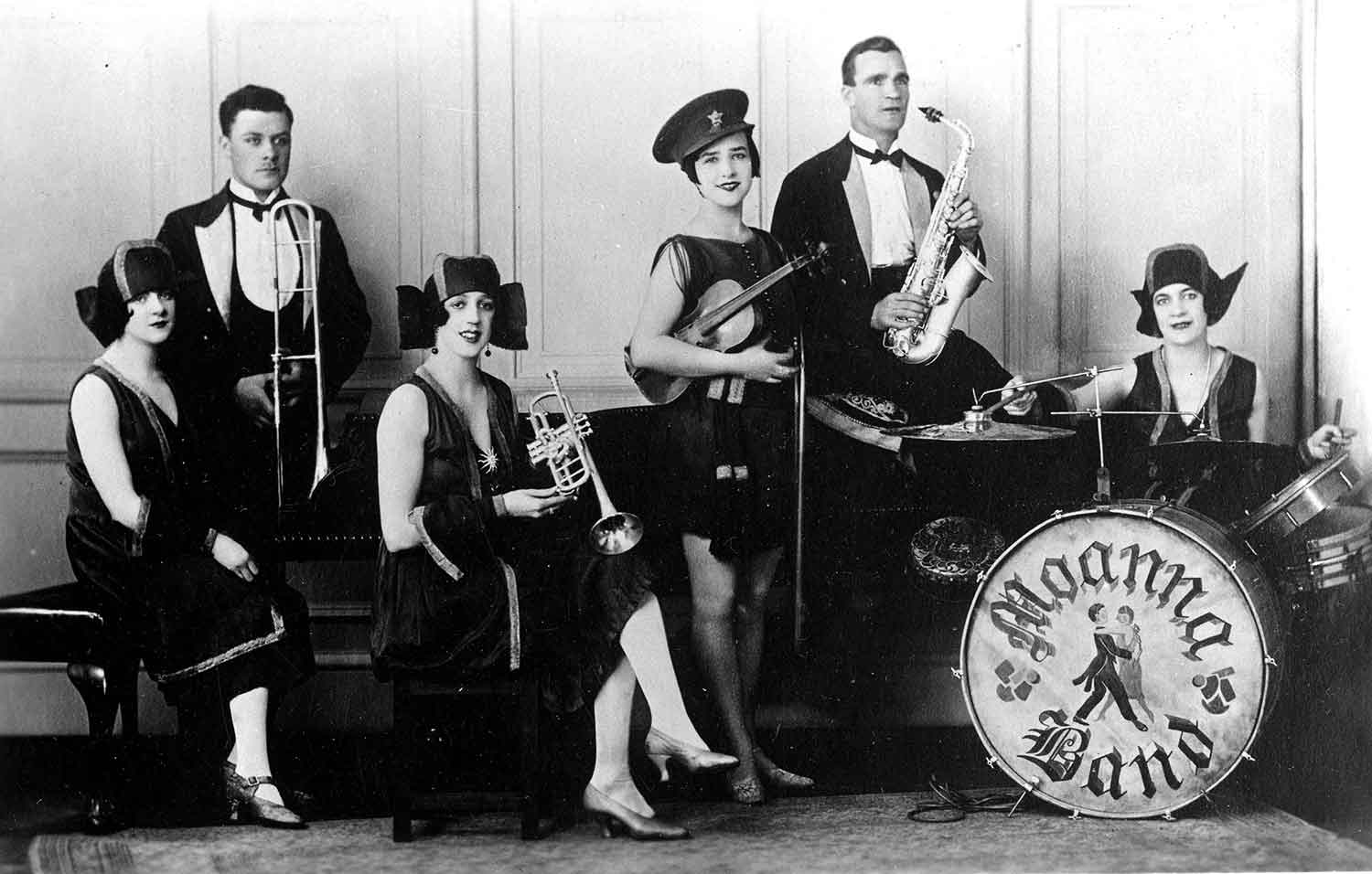
The year 1920 also marked the start of the Prohibition era and the rise of nightclubs, speakeasies, and notorious gangsters like Al Capone. All in all, there was a huge shift from previous decades, not just in society but in fashion. The Roaring 20s dress brought about iconic and timeless styles, many of which helped shape those that exist today.
How did men’s fashion change in the 1920s?
The Roaring 20s were a time of prosperity, fun, and individual freedom for both the elite and the working class. It also marked the rise of consumerism. Since fashion reflects the period, it’s no surprise that men’s and women’s styles started highlighting these changes.
In the 1910s, the working class wore durable, sturdy clothes that would last a long time. Most people opted for the clean-cut look, too.
By the start of the 1920s, though, styles had become more relaxed than ever before. More manufacturers constructed clothes with softer fabrics and slightly looser fits. Formal wear became more diverse, elegant, and glitzy, though it was still functional.
Wealthy women opted for shorter skirts, cocktail dresses, and flapper dresses, the latter of which was first popularized in European fashion. Elite men still wore tailored suits as before, but there were several notable changes.
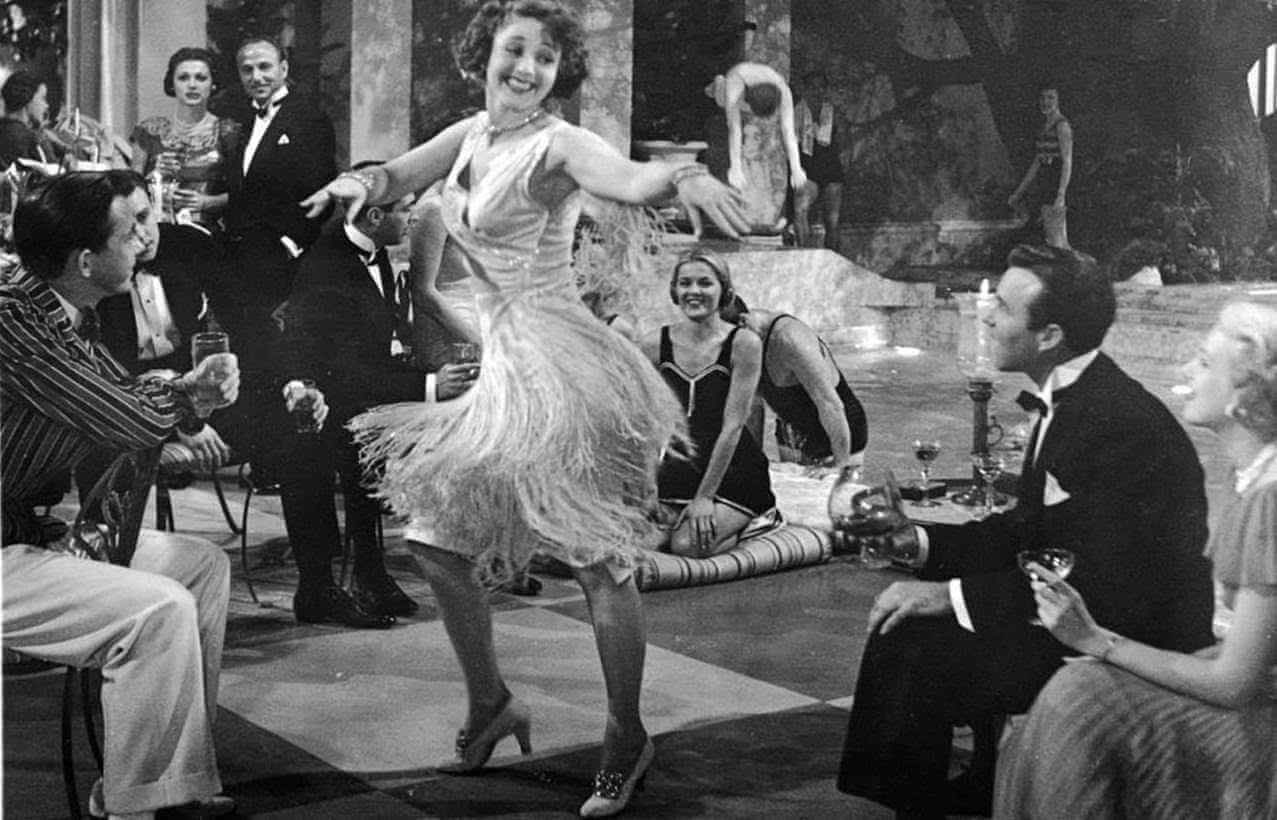
For one thing, much of 1920s men’s fashion was influenced by the rise of gangsters. This included the notorious Peaky Blinders, a street gang from Birmingham, England that made many iconic styles such as three-piece suits and flat caps trendy.
Gone were the shoulder pads and stiff fit of the previous decade. These were replaced with form-fitting suit jackets with gently sloped shoulders and tailored suits with cuffed pants that creased in the front for a stronger silhouette.
The 1920s were also a time for casual dress. As menswear became less regimented, leisure clothes and sportswear made their debut.
This meant sweaters, plus-fours, and other wide or baggy pants, workwear pants, jumpers, caps, and an array of accessories people could wear to express themselves. Sports attire in particular had to be fashionable enough and still practical for the upper and middle classes to wear.
For the young, educated man, suit jackets and matching ties were still on trend, but they weren’t as restrictive. More casual 1920s men’s dress also included cardigans, knitted pullovers, and ankle socks. Men also switched over to button-down shirts with detachable collars and started wearing bow ties and a greater assortment of hats, including fedoras.
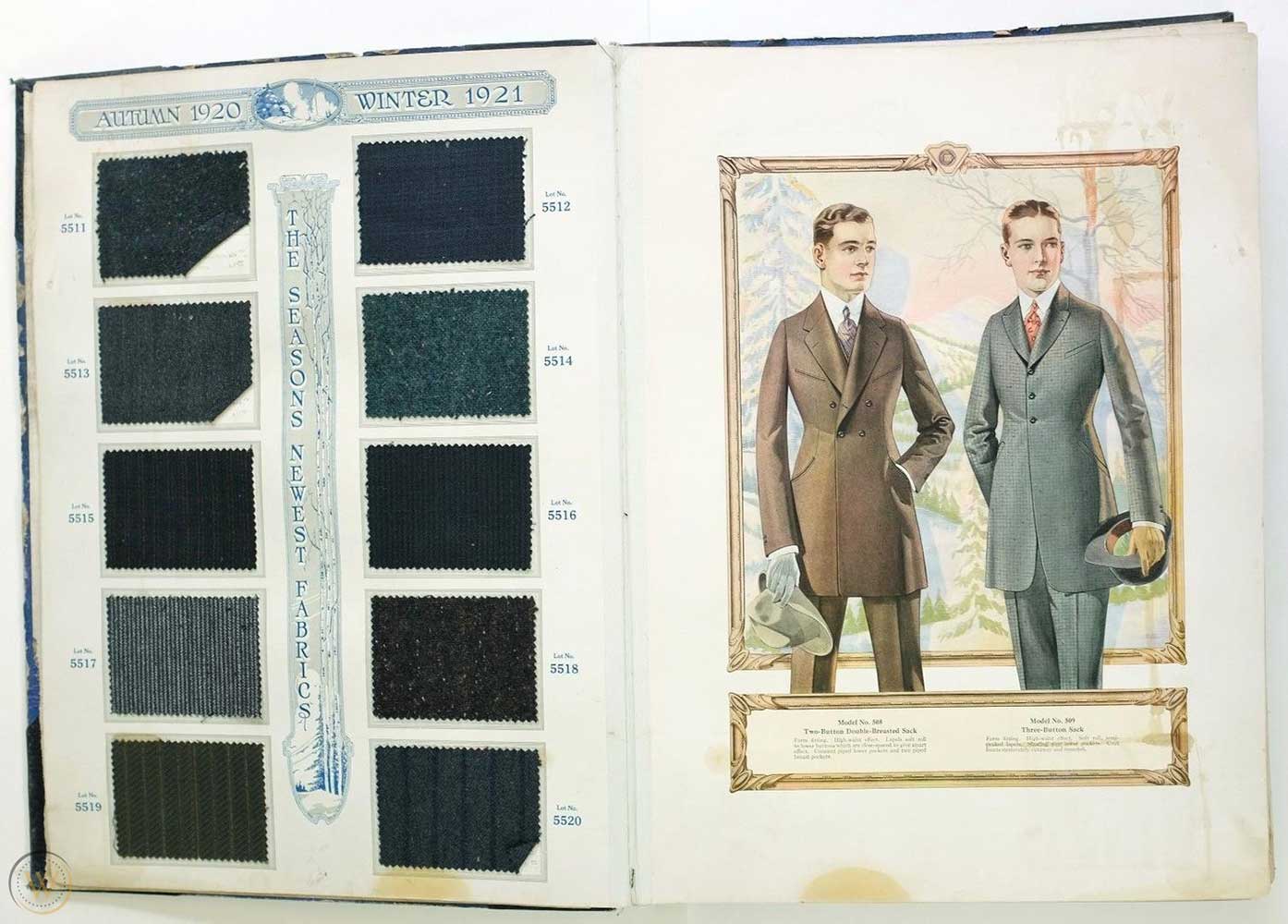
In terms of fabrics, the 1920s saw a slight departure from the previous decade. Clothes were still made from natural fibers like cotton, wool, linen, and silk, but synthetic materials like rayon also became more commonplace. At the same time, new textile production techniques saw more medium-weight as opposed to heavy-weight clothes, a greater variety of knits, and softer textures.
Many people consider the Roaring 20s to be the start of today’s seasonal fashion cycle. No longer did people have to wear the same clothes for years on end. Instead, there was a greater variety of patterns, shapes, styles, and colors than ever before. Because of this, they could change their style as they saw fit to keep up with the latest fad.
Misconceptions about 1920s men’s fashion
If you’ve ever read Fitzgerald’s The Great Gatsby, you probably know the Roaring 20s for being a wild, glamorous, carefree time. After all, the 1920s were an age of postwar optimism and people had more freedom and a lot to celebrate.
In the United States, menswear had started to move away from the traditional khaki and neutral tones of browns and greens to bolder hues and distinct patterns. This meant brighter suits, lighter colors, more colorful shirts, and casual clothing options.

But not everyone spent all their free time at speakeasies or wore cocktail dresses and looser suits. Nor did everyone have the funds for such things.
During the Roaring 20s, styles from all over the world – particularly Europe – were making their way across the ocean. Although leisure attire gained traction, formal styles were still very much in vogue.
For example, men’s formal evening wear often included a tuxedo, top hat, and leather oxford shoes. For formal and semi-formal settings, men would often wear tweed, herringbone, or pinstripe suits in navy blue, gray, or brown colors. Older gentlemen in particular still preferred the classic top hat over the fedora or derby hat, too.
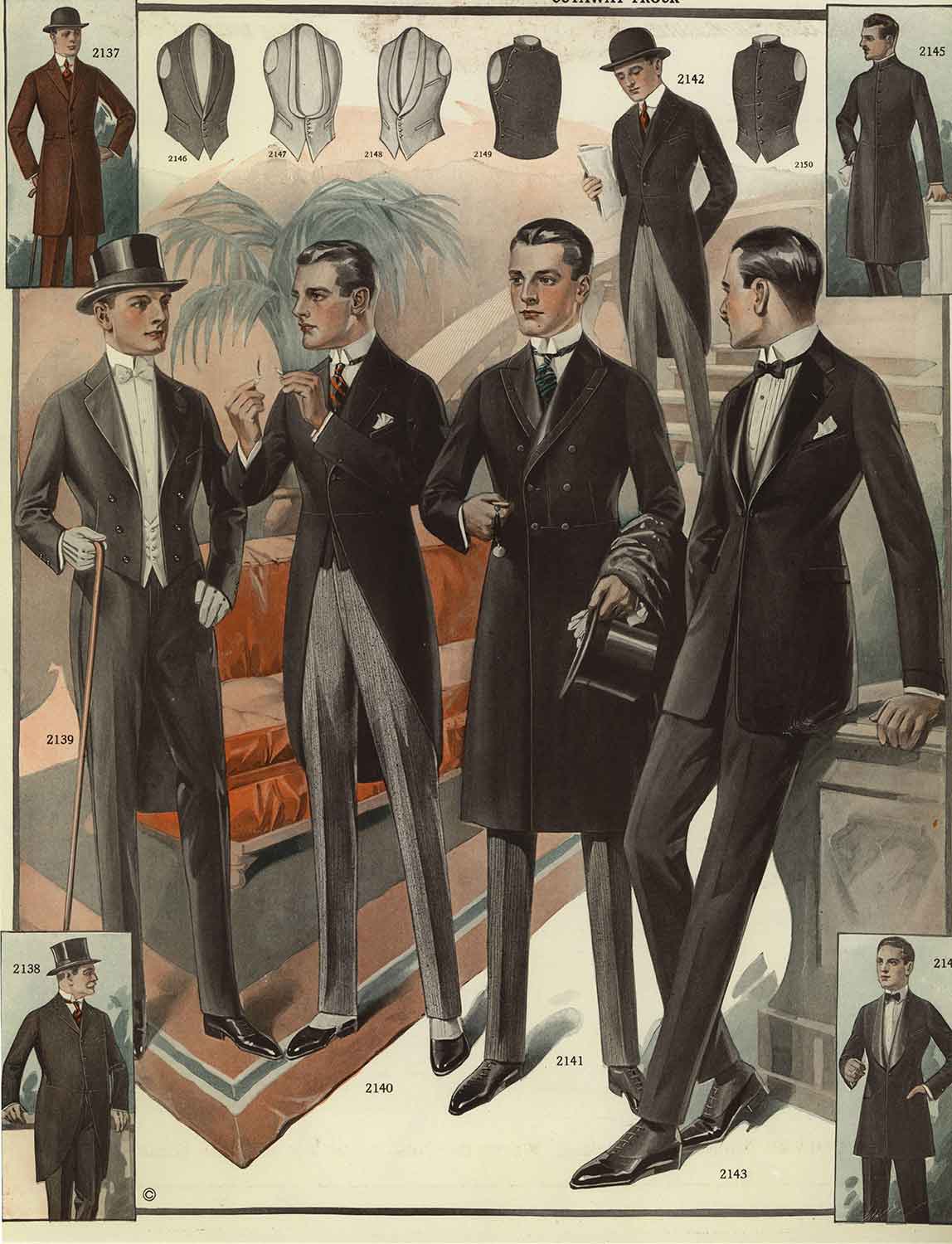
Along with this, one of the biggest misconceptions about the Roaring 20s dress is that it was all about style and glam. In reality, while it was definitely diverse, it was still highly practical and refined.
If you’re looking for a more accurate depiction of men’s formalwear during this time, check out Downton Abbey. Certain aspects, such as the hat styles and slim, tapered pants were also prominent in the United States at the time.
Men’s Clothing in the 1920s
If you’re interested in replicating the classic, timeless designs of the Roaring 20s dress in the United States, here are some ideas.
Suits
Men’s suits in the 1920s looked very similar to those that exist today. At the start of the decade, they had a slimmer fit and simpler design. By the end of the decade, they’d become looser and more colorful.
Many men still preferred the traditional tuxedo or three-piece suits for formal get-togethers and evening events. Suits often had micro patterns or black and white pinstripes as inspired by the gangsters of the time. Popular colors included blue, gray, brown, and ivory.
That said, suits also came in bolder patterns like plaid, herringbone, and wide stripes. In the early 1920s, the jazz suit also became popular amongst men who wanted a long, slim shape.
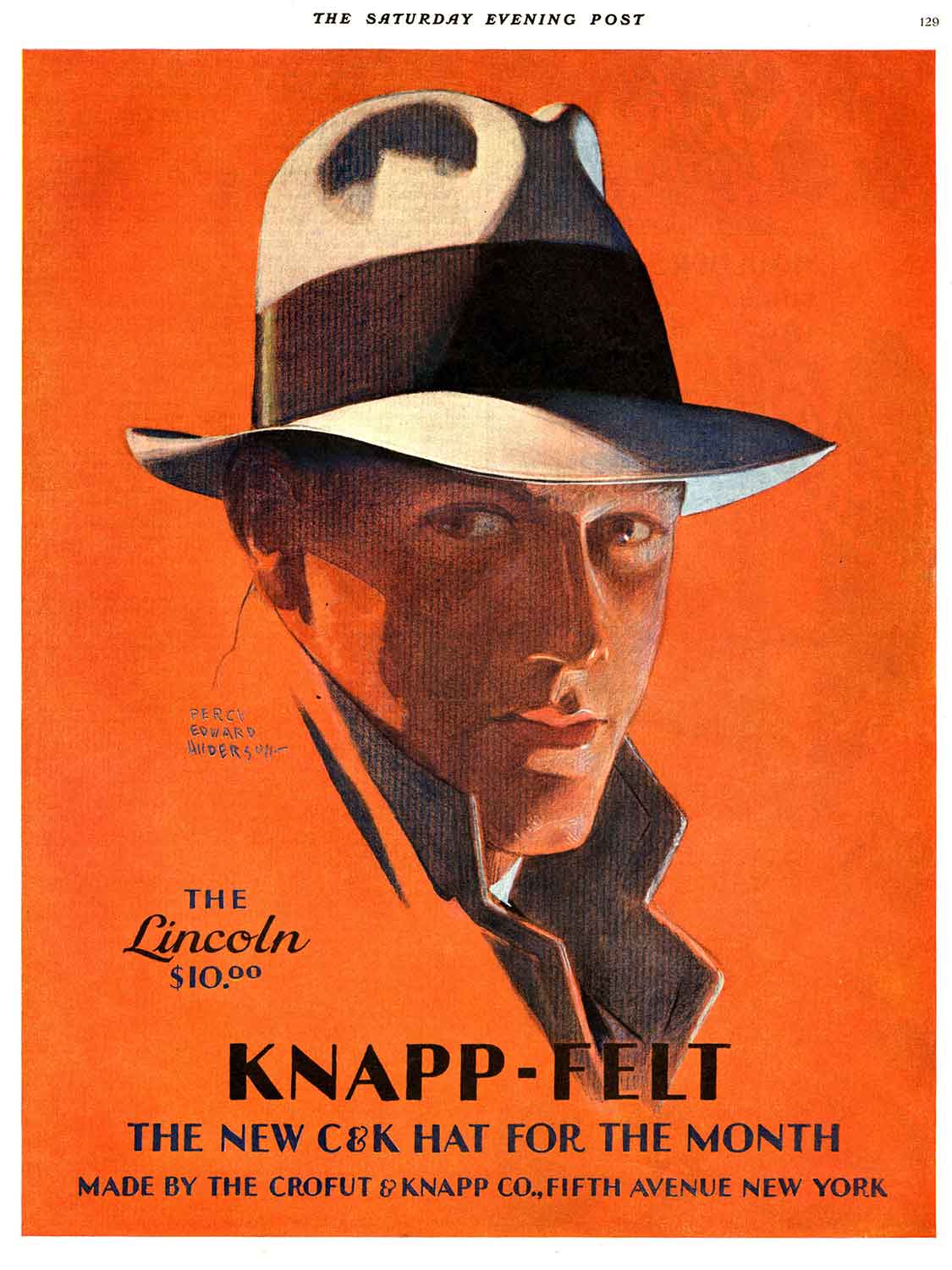
Most three-piece suits were double-breasted, but there were also single-breasted options. The suit jacket was higher waisted than before and had wide pointed lapels to emphasize the shoulders and waist. It also featured a three- or four-button closure down the front. Suit pants were flat in the front, had tapered legs, and a thinner waistline.
Styles changed by the season and age. In summer, for example, college students and barbershop singers often opted for a striped or navy blazer with white pants rather than a full suit.
In terms of fabric, wool, flannel, linen, tweed, and blends were still quite common.
Shirts
Men’s button-down shirts typically had a solid color, such as pastel, or boasted contrasting vertical stripes. These shirts also had a rounded collar that let the wearer show off their tie and was detachable for easy cleaning. Sophisticated men would also sometimes add a pin to the collar.
In the late 20s, most shirts had matching collars that were either solid or striped. Some casual shirts didn’t have a collar at all and came in neutral and pastel colors like lilac or sky blue. Around this time, plaid and candy stripe shirts also became trendy.
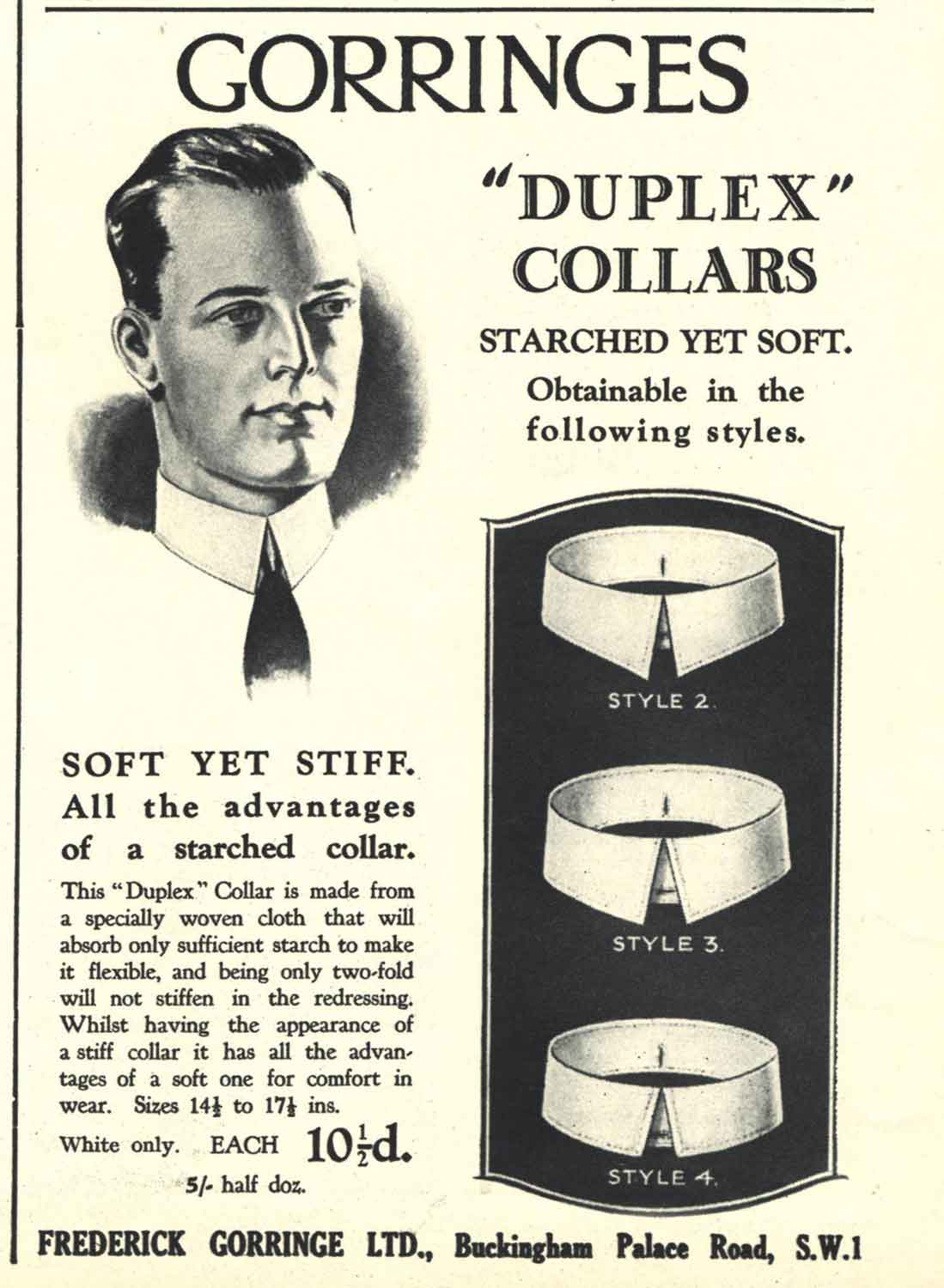
Younger gentlemen often wore shirts constructed from softer fabrics like cotton. It wasn’t uncommon to find more casual garments with a turndown collar, single cuff or cufflinks, or single barrel cuffs with a button. Shirts could be either partial or full button downs.
To the club or in warmer weather, men would sometimes wear Peaky Blinders shirts, or penny collar shirts. These were made-to-measure and flattered the wearer’s frame.
Short-sleeve shirts weren’t very common yet in the Roaring 20s, so men would roll up their sleeves on hot days. The overall fit is still considered fairly modern, aside from the detachable stiff collar.
Pants
Most men’s pants consisted of cotton or wool. They were typically tight at the waist but still wider than before. Pants tended to have straight or cuffed legs and were neither skinny nor especially long. The waistband was higher and held up with button suspenders or a belt. Around this time, the single pleat became popular in the United States, since it gave pants a nice crease that remained even when the wearer moved or sat down.
Around the end of the 1920s, Oxford bags made their way to North America. These pants were looser than standard options and wide-legged for a comfortable fit, making them especially popular amongst college students and younger men.
Low rise pants hadn’t yet made an appearance in the country, but there were still a lot of fun patterns and colors for the fashion-forward. This included stripes, checks, herringbone, plaid, and tweed. Popular colors were gray, white, black, beige, and khaki.
Waistcoats and Vests
Unlike in the 1910s, the Roaring 20s dress did not mandate waistcoats and vests. However, they were still rather prominent, but with a lower cut. Typically, they were buttoned up high and had notch lapels or, by the end of the decade, no lapels.
Most waistcoats and vests were slim-fitting. They also had long, pointed tips and a deeper front than before to show off the shirt and tie beneath.
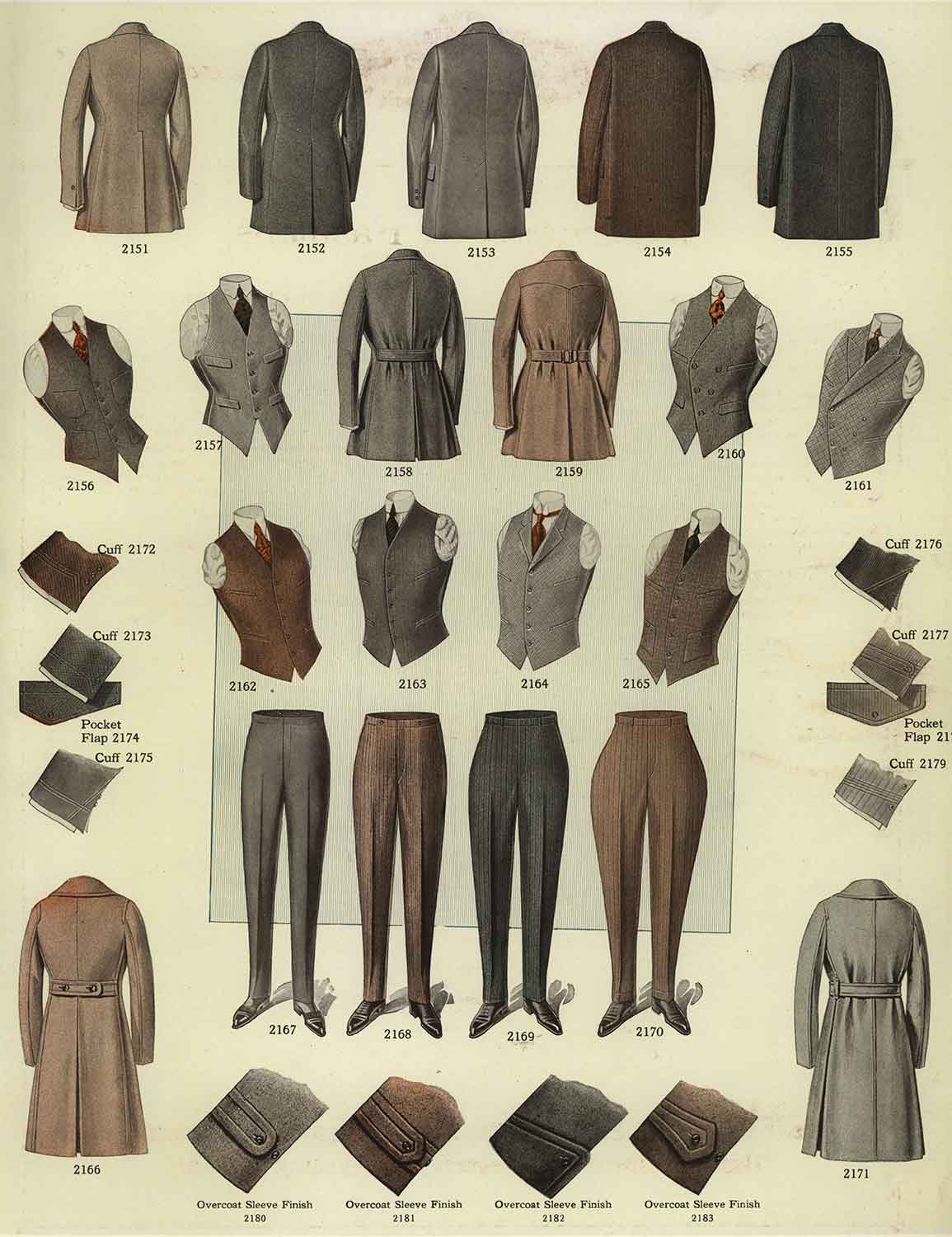
Vests had pockets in the front and were typically single breasted, though some sophisticated gentlemen still preferred double breasted ones. Members of the working class couldn’t always afford a three-piece suit, so they’d instead pair a nice vest with matching pants.
These garments came in solid colors like black, blue, or gray and often boasted geometric or colorful patterns. Some were tweed or knitted. Men who wanted a more casual or sporty aesthetic would often wear a pullover knit vest over a shirt.
Outerwear
Outerwear like jackets and overcoats tended to match the suits and pants. For example, if the suit was fitted at the waist, so too was the coat. And if the suit or pants were wider and looser, the outerwear would have a similar fit.
Men’s coats often reached below the knee and had broad shoulders and wide lapels. Some were fitted at the top and roomier at the waist and hips to flatter any frame. Although outerwear could be nearly any fit and style, one particularly trendy option was the straight hanging coat, which did not cinch at the waist.
In general, outwear was less colorful than shirts or pants. Initially, they came in neutral colors like brown or black. However, darker colors like navy blue became popular when the British trend came to the United States since they were considered flattering to nearly anybody. These colors were also more similar in aesthetic to those worn by the Peaky Blinders gang.
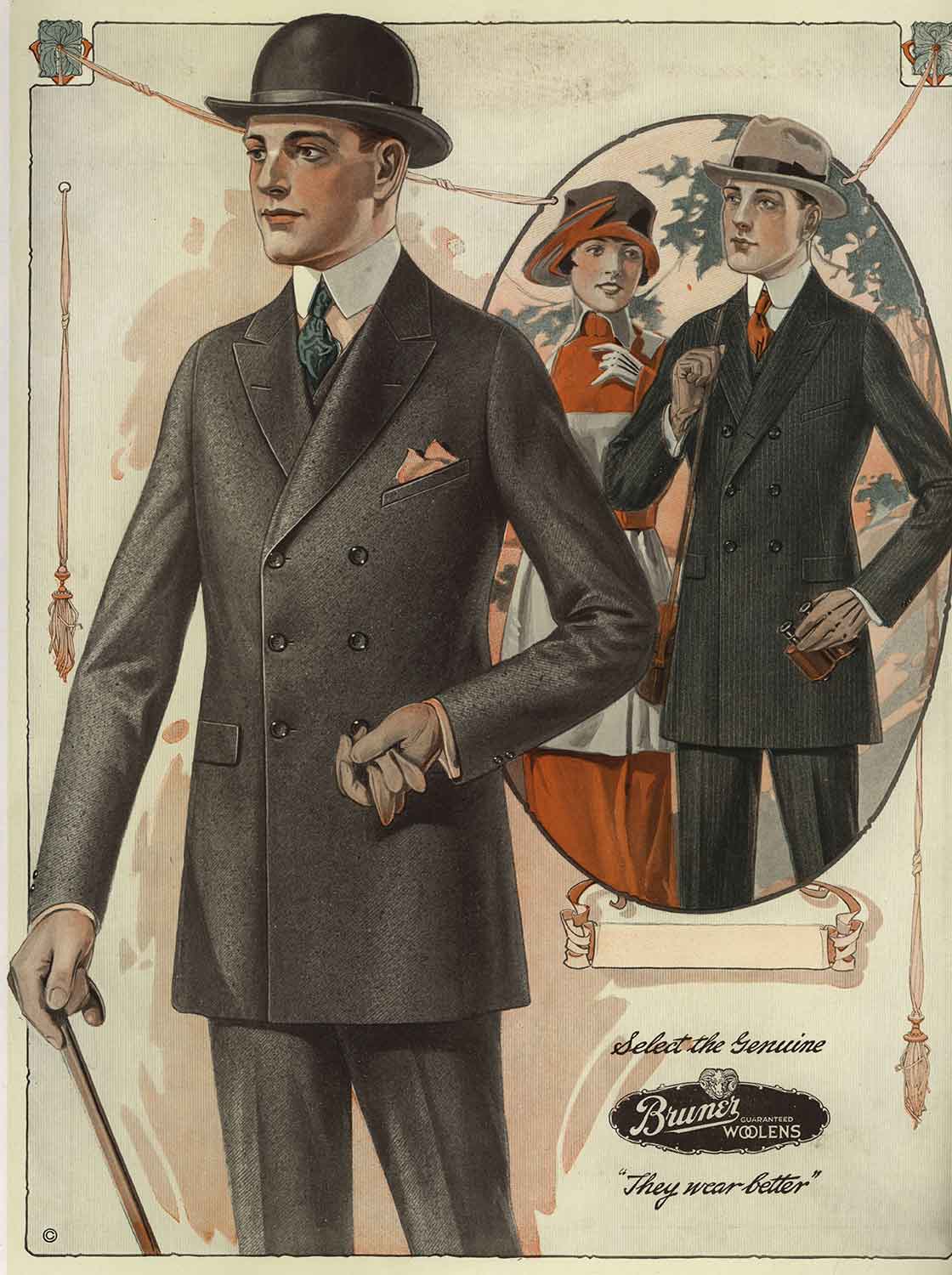
Formal outwear could be either double or single breasted. More luxurious garments featured a simple silk lining as opposed to the previously popular bulky fur lining found in tweed and wool coats.
Generally, outerwear was on the heavier side and fit closer to the body than most modern attire. Wool coats were highly durable and had a coarse finish. In warmer weather, people opted for silk-lined jackets with cotton or linen sleeves since they were lighter and less stiff. These jackets sometimes had a cutaway front that was mostly square.
Men’s Shoes in the 1920s
During the Great Gatsby era, the Oxford shoe took the United States by storm as a more comfortable alternative to other formal options. Other popular options included wingtip shoes, patent leather shoes, two-tone sports shoes, high-cut work boots, and winter boots.
In terms of material, most men’s shoes were constructed of a mix of leather and canvas. However, some shoemakers started to incorporate reptile skin in their designs. Regardless of material, most shoes came in different shades of white, black, or brown.
Men’s Accessories in the 1920s
Hats
There was no shortage of hats in the 1920s. For formal occasions, gentlemen would often wear top hats paired with a matching tuxedo. These top hats were typically made from Buckham, which made them sturdy. Some were collapsible, while others were stiff.
Middle-class men would frequently wear fedoras and bowler (or derby) hats as a more casual alternative to top hats. These came in dark colors for winter and light colors for summer. Fedoras also had a wide brim and had a downward shape in the front and back. The younger crowd typically rolled the sides upward; older men would turn one side of the brim up and keep another side down.
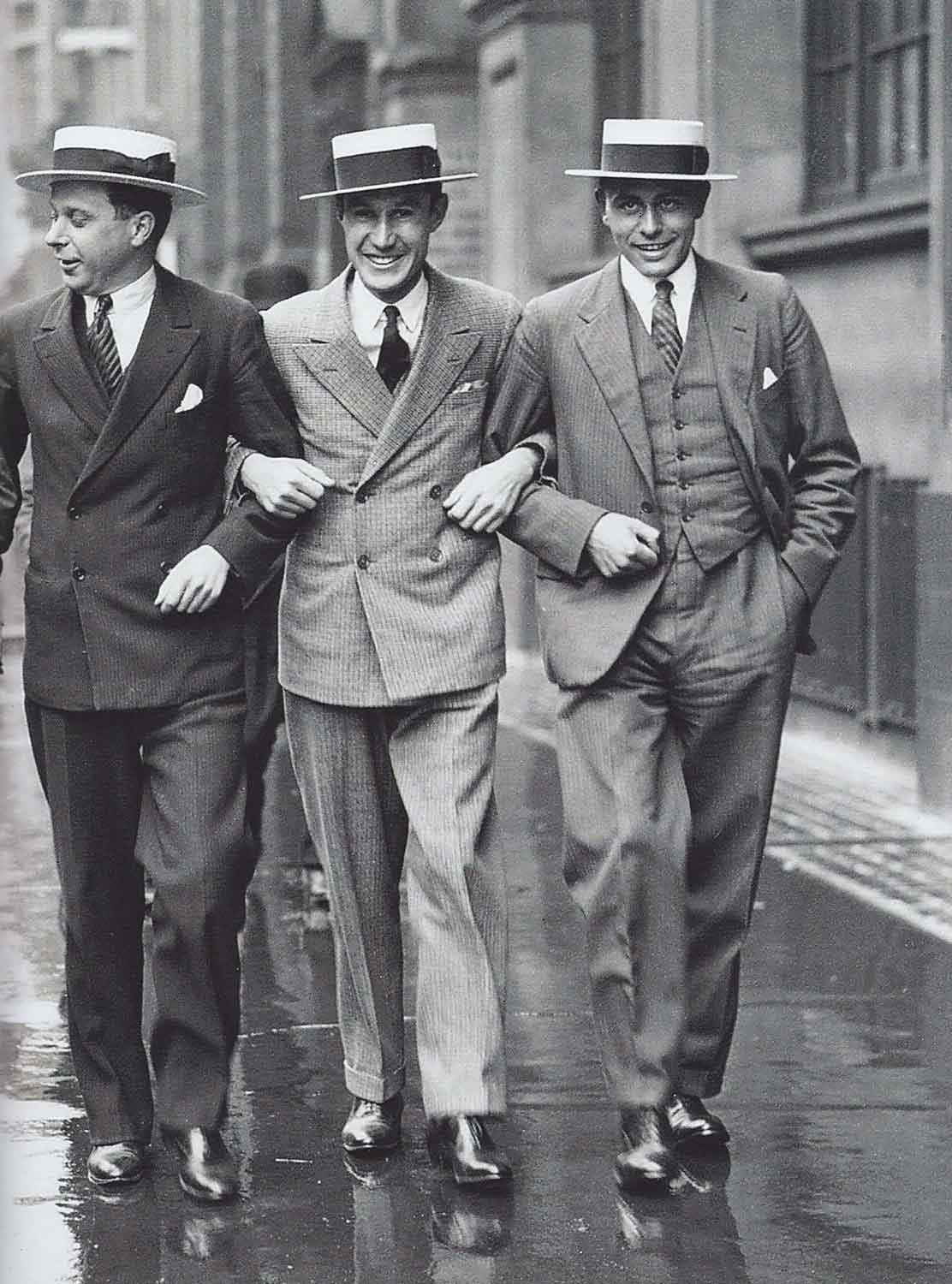
Another casual option was the skimmer hat or boater. These stiff hats were commonly made from thick straw and worn in summer and were best for outdoor use. Most were tan or light brown.
Other options included tweed caps, which were also used for sports such as golf, and various flat hat styles like the newsboy and ivy caps. Newsboys and similar sports caps were usually floppy as they did not have a stiff brim. They were also constructed from wool or cotton and came in lighter colors. Some even featured a checkered or plaid pattern.
Towards the end of the 1920s, hats came in more unique and bolder colors. For example, bowler hats could be blue or green. Regardless of style and color, the hat was meant to complement the outfit.
Pocket Squares
Pocket squares were often made from silk or linen. They were meant to elevate the wearer’s suit and add to the overall look by adding a flair of color.
Older, wealthier men were rarely seen without a pocket square. Some would opt for solid colors, while others went with bolder or art deco designs. Whatever else, the pocket square would match the tie, hat band, or shirt color.
Watches
Although the Roaring 20s dress still featured pocket watches, companies like Elgin National Watch Company and Rolex came on the scene. Rolex began making luxury wristwatches for the elite and produced the first waterproof timepiece made with precious metals, a screw-down crown, and a case back. Elgin National Watch Company, meanwhile, manufactured timepieces for the average working man.
Cartier Tank also started producing wristwatches in the 1920s, which were made popular due to prominent movie stars such as Clark Gable and Rudolph Valentino wearing them in their films.
Eyewear
It was considered fashionable to wear glasses during the 1920s. One popular style was pince-nez, rimless glasses that sat on the bridge of the nose. These came with a cord that would drape down one side and attach to the wearer’s clothes. Older, sophisticated gentlemen like President Theodore Roosevelt wore these, specifically those constructed with a gold or wire frame.
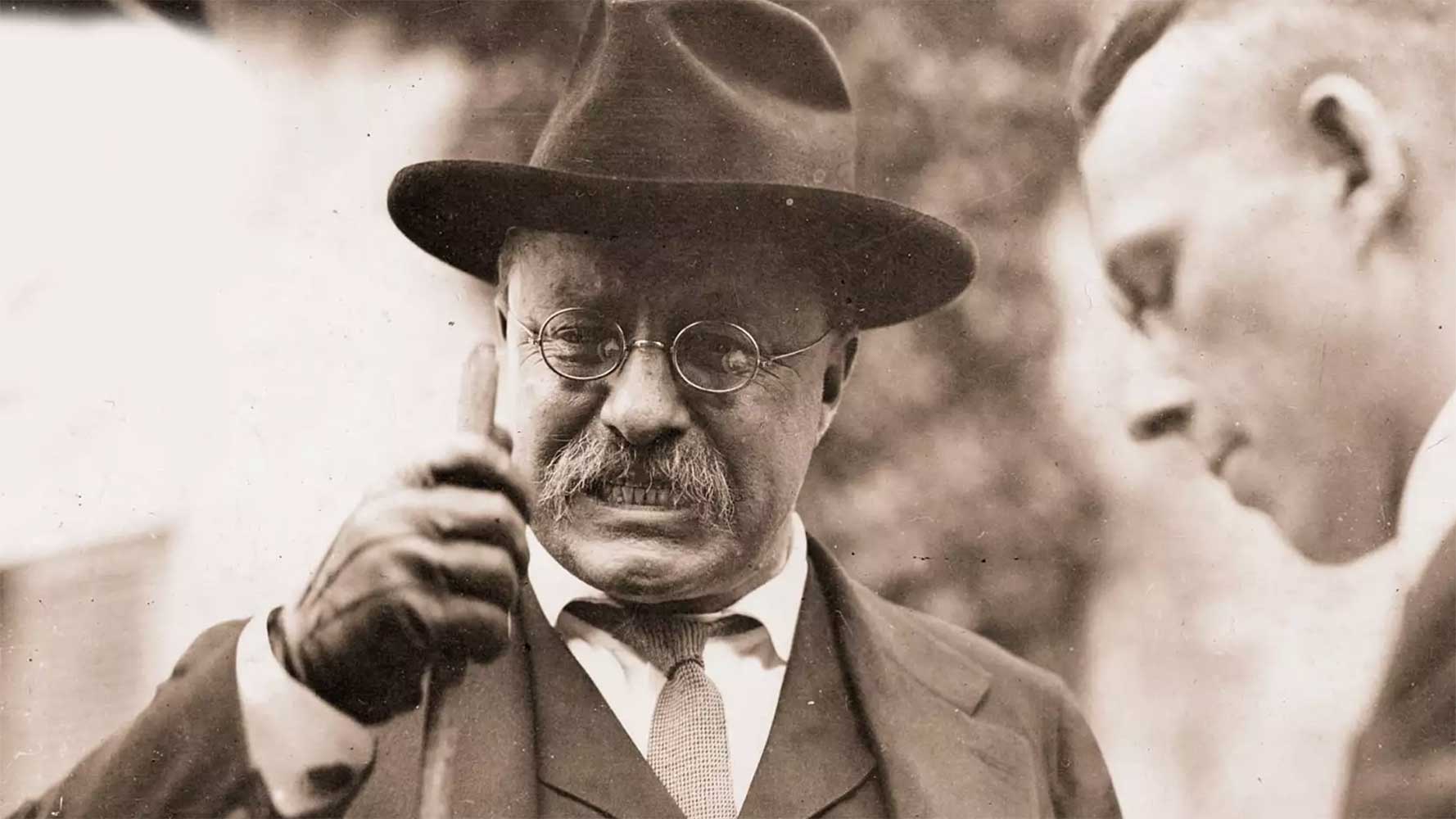
Round spectacles were also quite popular and eventually paved the way for oval and octagonal shapes. For a sportier look, eyewear brands started making thicker frames that came in various colors such as dark brown, black, or tortoiseshell. Rimmed glasses tended to be heavy, though there were rimless options, too, which were lighter.
Eyewear was about more than just the aesthetic, though. Special lenses were made to reduce the glare of the sun and protect the wearer’s eyes.
Ties and Neckwear
Neckties gained a lot of popularity around the 1920s. More than that, the options expanded to include horizontal stripes, plaids, and solid colors like purples, pinks, and grays. Bow ties also became more varied to give the wearer more freedom of expression. Along with this, the European trend of diamond patterns and paisley prints made their debut in United States menswear.
In general, neckties were made from fine silk or knit wool, depending on the season and occasion. Scarf ties, which were tied in a Windsor knot and worn under the sweater, were also common and were originally constructed from silk or rayon.
For many men, collar pins and clips were another way to change up the look of their neckwear. However, it was not until around the late 1930s or early 1940s that neckwear really began to diversify.
Men’s Formalwear in the 1920s
Whether they were attending a ball, enjoying an elegant dinner party, or getting married, most men wore either a black or dark navy suit or tuxedo in the Roaring 20s. The tuxedo tailcoat, which featured a tail at the back and came as a fitted jacket, was still very prominently used for formal events. Formal three-piece suits were longer than they had been in previous decades and were slightly less structured to allow for more movement and comfort.
Sophisticated gentlemen typically combined their suit or tux with an elegant top hat that matched their aesthetic. In some cases, they would also wear a luxury watch and a carefully folded pocket square to go in their suit pocket. White ties were prominent for formal and special occasions, but black ties also started gaining traction.
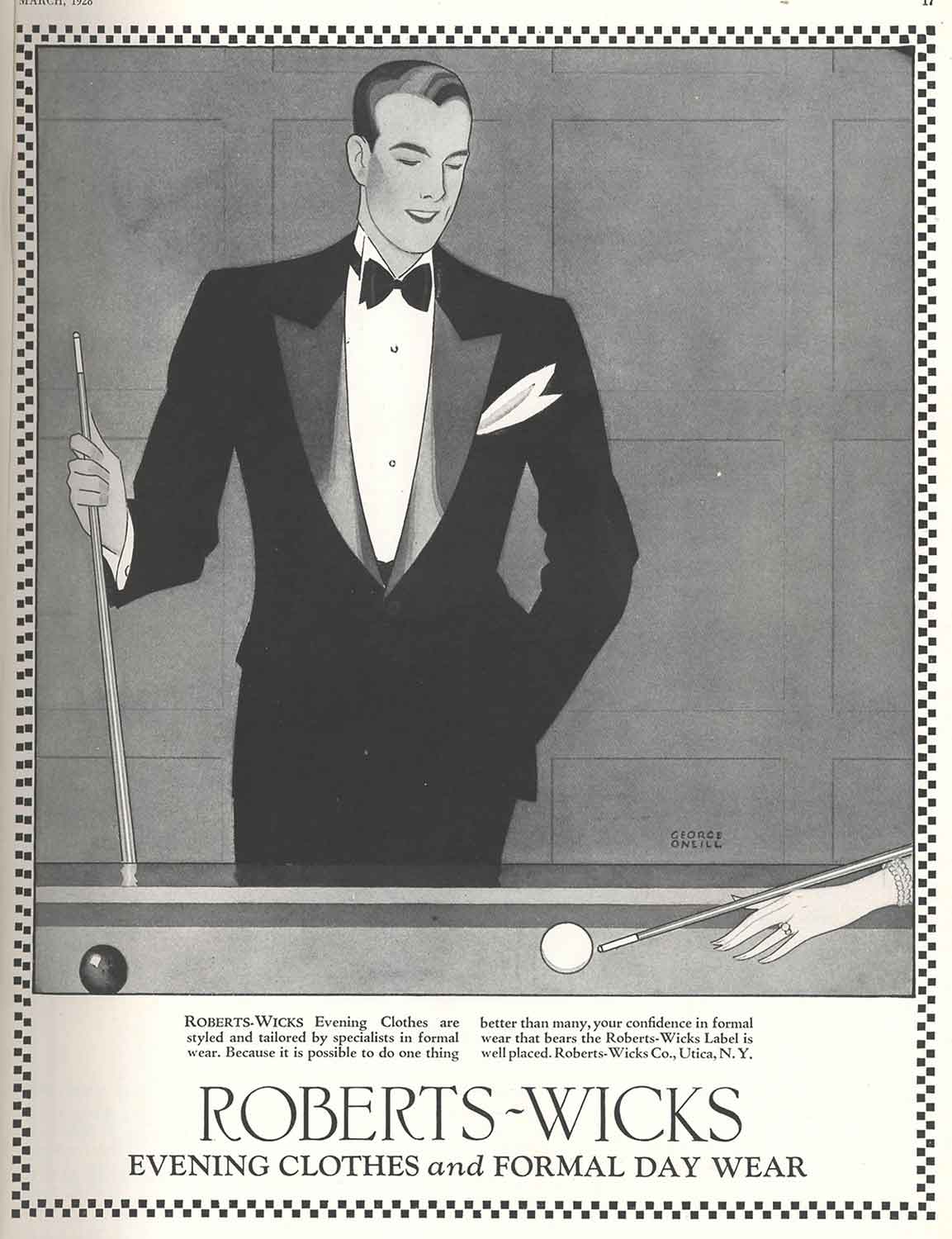
For slightly less formal events, men would sometimes choose a dinner jacket instead of a three-piece suit while women might wear a cocktail dress. Along with this, the formal day dress that had been popular in the past became reserved for special occasions. The look of it changed to feature fewer buttons and higher-waisted pants.
Several luxury menswear brands like Gucci were established in the 1920s as well. Gucci, in particular, began designing and producing an haute couture style for the upper class. These garments were custom-fitted for the elegant, sophisticated man.
Men’s Casual Dress in the 1920s
In terms of casual wear, men started to wear more sweaters, especially on colder days. Thanks to the influence of sports and leisure clothes, casual dress often featured knickerbockers and plus-fours, even for those who did not play sports.
Casual shirts were typically worn unbuttoned and had brighter or striped prints. Younger adults started wearing softer, attached collars or went for collarless garments, as in the case of the henley shirt.
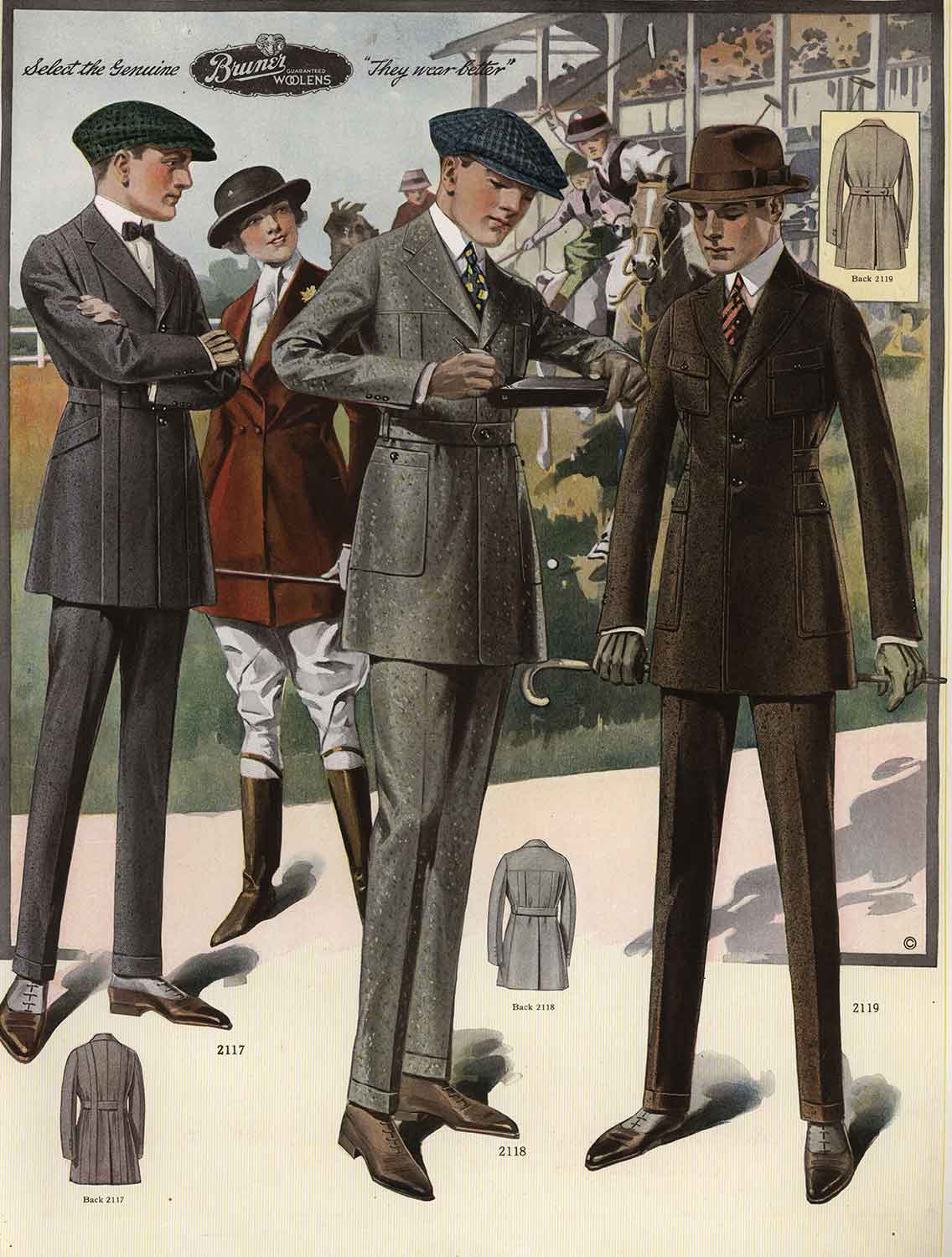
Students at the University of Oxford started wearing Oxford bags, which were very wide and much baggier than most men’s pants. Younger men also started switching to jeans, thanks to Levi Strauss & Co’s popularization of denim.
For the most part, older gentlemen were still primarily influenced by pants from the Edwardian era (1901 to 1910). Their casual pants were fairly slim, high-waisted, straight-legged, and tapered at the bottoms.
Men’s Grooming in the 1920s
The Roaring 20s saw a few changes in terms of men’s grooming regimens. For one thing, sideburns were cut higher than before. For another, hair was kept to a medium length.
Trendy styles at the time included the comb-over, a single part in the hair, or an entirely slicked back look. This was true whether the man wore a hat or not, though college-age men started deviating slightly from these looks.
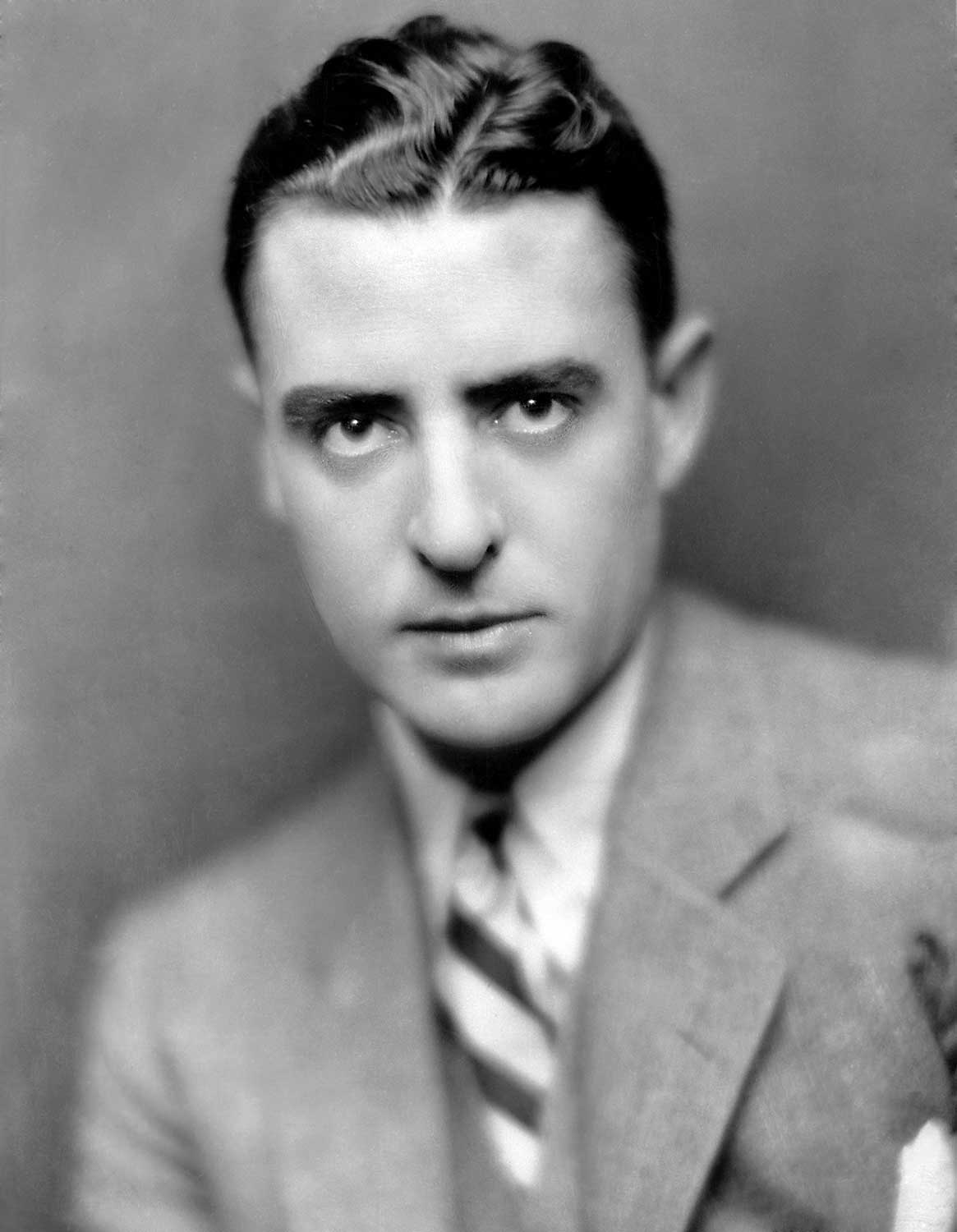
In many cases, men would use certain oil products to keep their hair in place throughout the day. Many of these styles were easier for those who had straight hair. Men like Charlie Chaplin had wavier hair and, though they would still follow the grooming trends, they tended to achieve a wilder or somewhat mussed up look.
When it came to facial hair, opinions had changed in the 1920s. Having any kind of facial hair, but especially a beard, was often seen as unsanitary. However, older men could sometimes get away with a well-groomed, carefully trimmed mustache as it made them look older, wiser, and wealthier.
1920s Men’s Fashion Icons
The 1920s had a rise of men’s fashion icons, including:
Mr. Douglas Fairbanks
Fairbanks was a major movie star and was considered both Hollywood royalty and an “all-American” man. He invented the action hero we know today. His most iconic style was Tom Ford’s slim-fit bib front cotton shirt, a checked wool suit jacket, tailored pants, and a ribbed silk tie.
Rudolph Valentino
A superstar due to his role in The Sheik, Valentino best symbolized masculinity in the 1920s. He popularized the slicked-back hairstyle called the “Vaselino” and tended to have a sophisticated look.
Al Capone
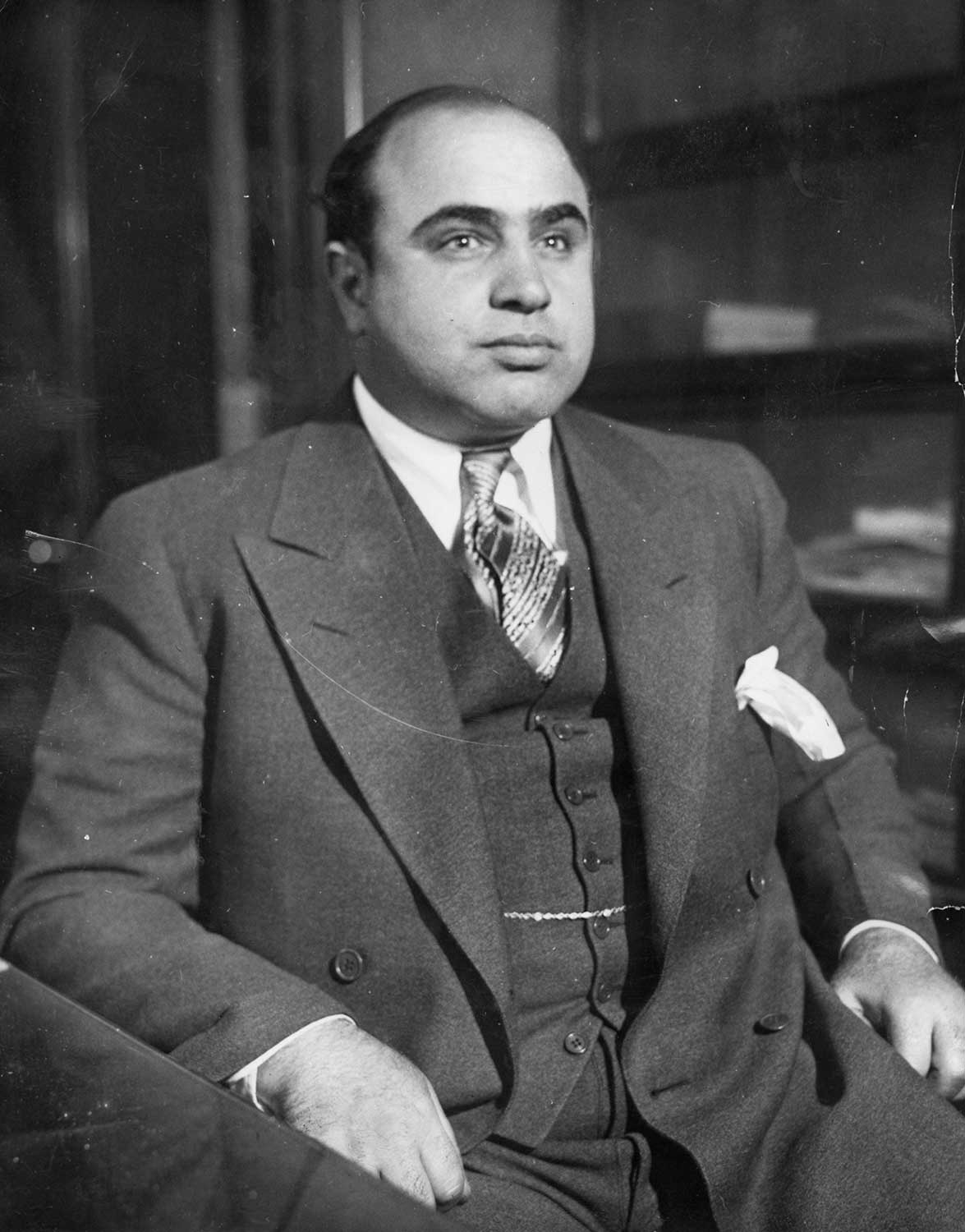
Not only was Al Capone one of the most notorious gangsters of all time, but he also had a highly distinctive style. He would often wear dark or lime-colored three-piece suits, luxury brown or black oxfords – some of which had wingtips – and a tailored jacket with patch pockets. He also boasted a classy fedora or boater hat, buttoned barrel cuffs, a tie, a white pocket square, and a lot of bling.
F. Scott Fitzgerald
Renowned author Fitzgerald was known for his work, The Great Gatsby, as well as for depicting the flamboyance of the Jazz Age. He often wore smart, plaid or flannel suits with wide notched lapels, ties of different lengths, patterns, and shapes, and a contrasting pocket square.
Humphrey Bogart
Bogart was a prominent American film and stage actor, particularly in crime dramas, but he was also instrumental in making double breasted suits popular. He tended to wear different ties and bowties, a fedora, trench coat, and crisp, sharp suits.
Fred Astaire
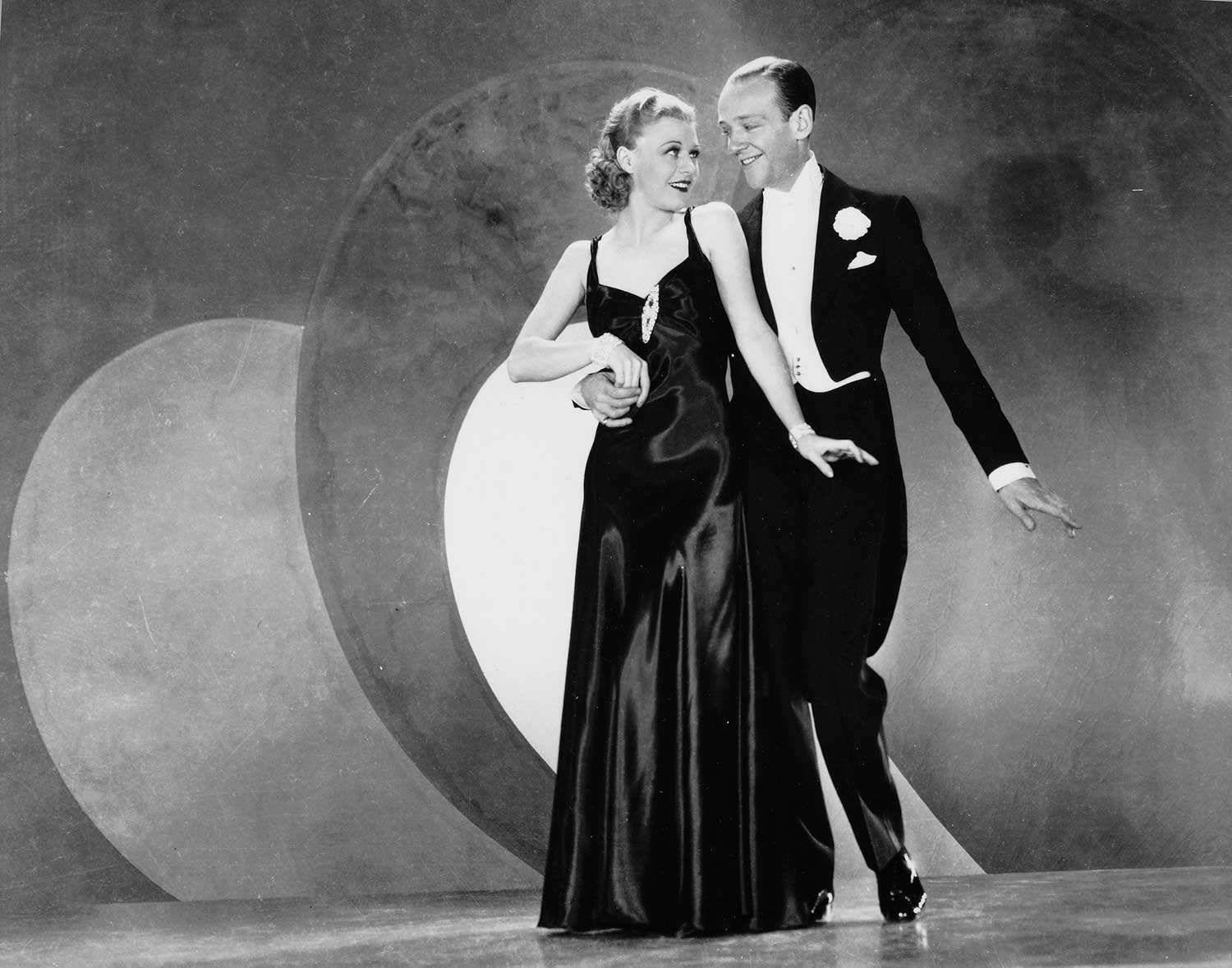
Viewed as one of the best dancers in all of film history, Fred Astaire had a unique style that included custom tailored suits in conservative colors, silk handkerchiefs as belts, and roomy jackets that still had a refined shape. He wasn’t afraid of mixing things up though, for he also often sported bold patterns and colorful outfits that always managed to look sophisticated.
Cary Grant
British-American actor and popular icon Cary Grant often donned a more casual look with tailored pants, crisp white shirts, and various knitwear. He tended to avoid hats since he believed they were unflattering for his face shape.
Gary Cooper
Known for his understated acting technique and enduring style, Cooper was a leading man in many Hollywood films. He often wore wide, tailored pants and relaxed blazers, but he was also right at home in three-piece suits.
Where to buy 1920s men’s fashion?
You can get 1920s inspired menswear from many places, including Amazon, Etsy, eBay, and many specialty stores.
Many men’s luxury brands today also design and manufacture garments that would fit right in with the Roaring 20s era. This includes brands like Tom Ford and Gucci, though much of what you’ll find on their website caters to the modern age. That said, if you’re looking for accessories like timepieces or pocket squares, you should be able to find something there.
However, if you’re looking for something specific, your best bet is to shop at a ready-to-wear or made-to-measure store. These establishments emphasize quality and tailor every item to the wearer’s preference. Plus, since the garments are custom-made, you can get unique patterns, colors, and even fabrics.
1920s Men’s Fashion Bottom Line
The 1920s were often known as the Jazz Age or the Roaring 20s and for good reason. They were a time of prosperity, change, and freedom for many people in the United States. Not only did men and women have more disposable income at their fingertips, but they also had more opportunities to express themselves through fashion.
1920s men’s fashion was largely inspired by the rise of gangsters like the Peaky Blinders and various European trends. While many gentlemen still wore smart, tailored suits, the decade saw a rise in diverse attire from leisure day clothes to sportswear.
This meant more patterns, bolder colors, and different cuts than ever before. It also meant changes in fabrics – rather than the stiff, coarse construction used before, many garments became softer, more comfortable, and roomier.
Many clothes were still heavier than what you’d find today, including suits, overcoats, pants, and jackets. However, a lot of the modern fashion trends that currently exist are still based on those that became popular in the United States a century ago. The pinstripe suit and silk-lined coats, for example, started trending in the Roaring 20s.
If you’re looking for more inspiration for 1920s dress, look no further than Fitzgerald’s The Great Gatsby or Downton Abbey. And, if you’re interested in recreating one of the many trends of the 1920s today, check out a made-to-order shop or specialty brand online.
Thanks, as always, for reading.
Stylishly Yours,
Angela Mae
He Spoke Style
The post The Ultimate Guide to 1920s Men’s Fashion first appeared on the men's style blog He Spoke Style - Men's Style, Fashion, Grooming, Tips and Advice
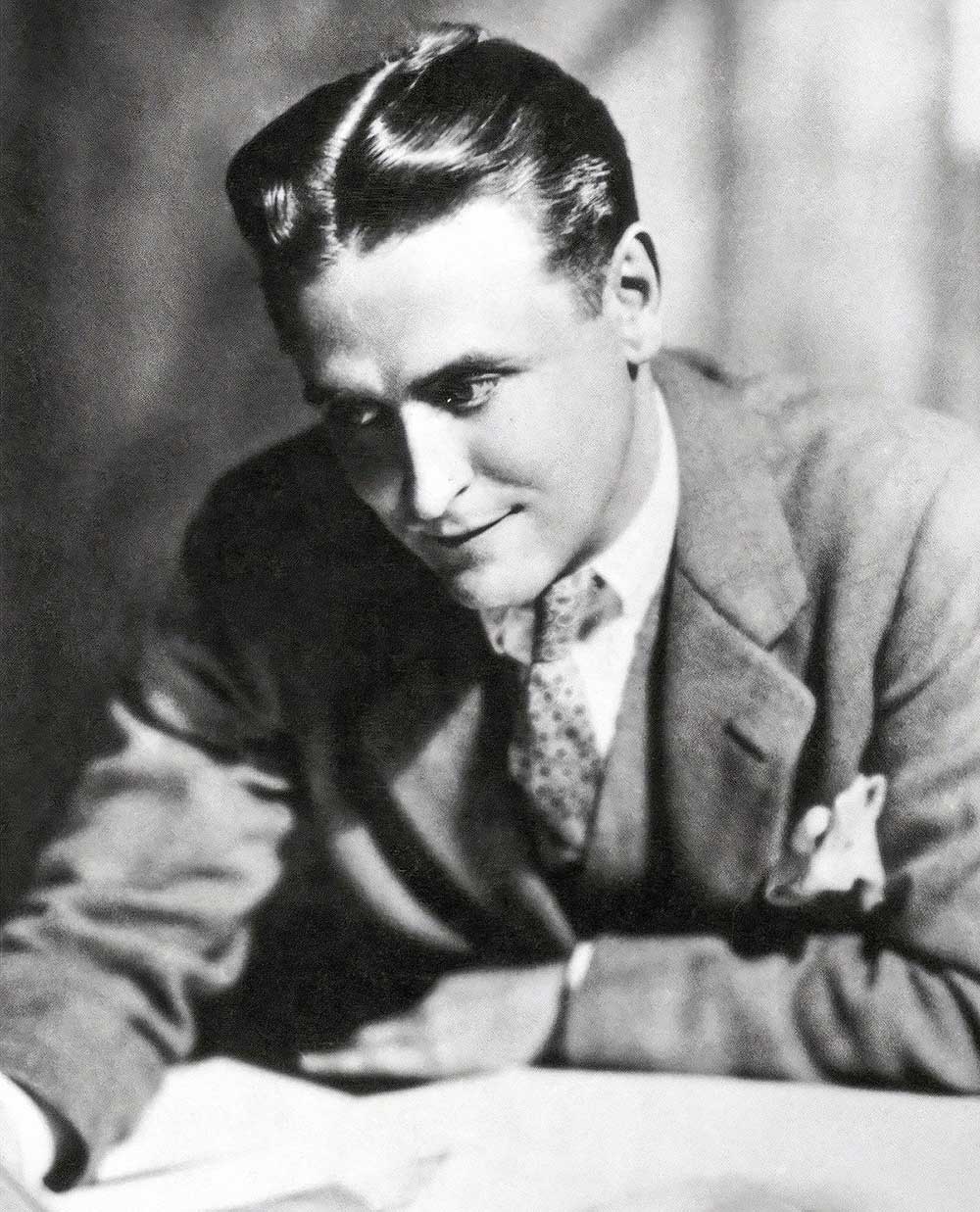
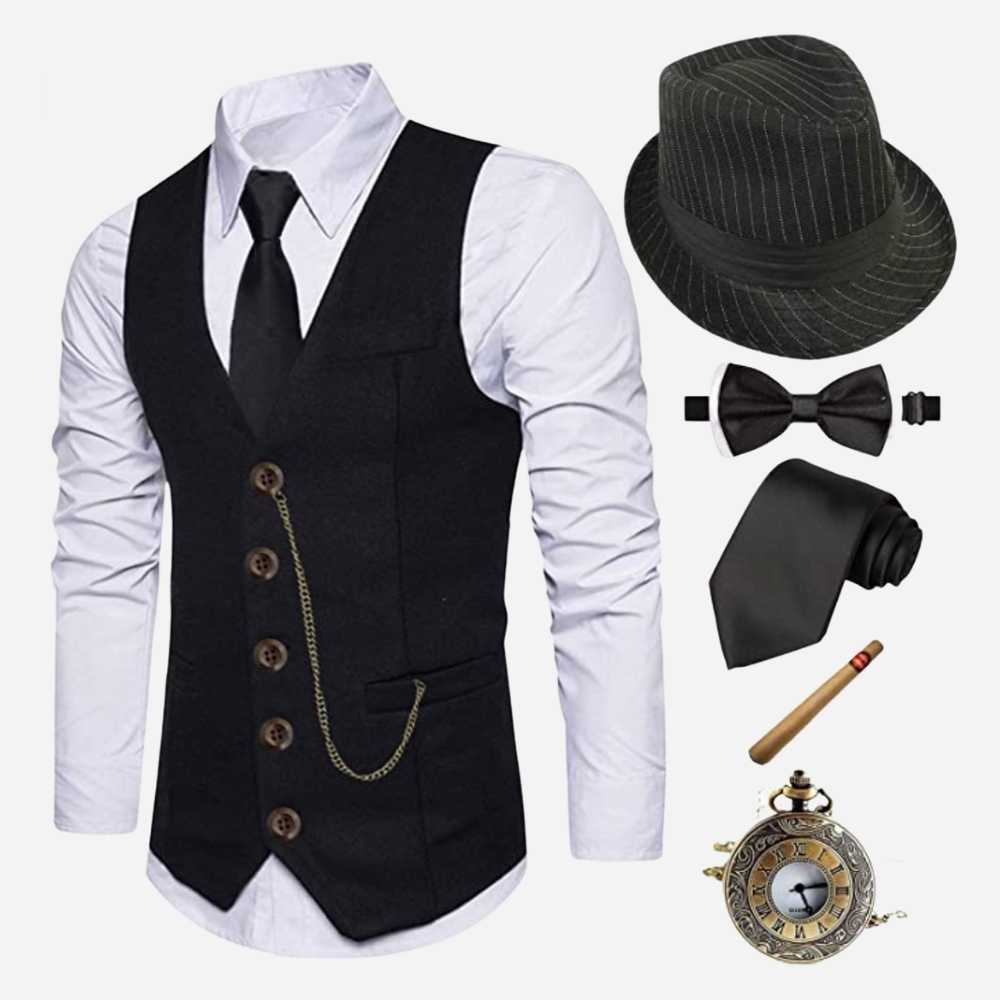
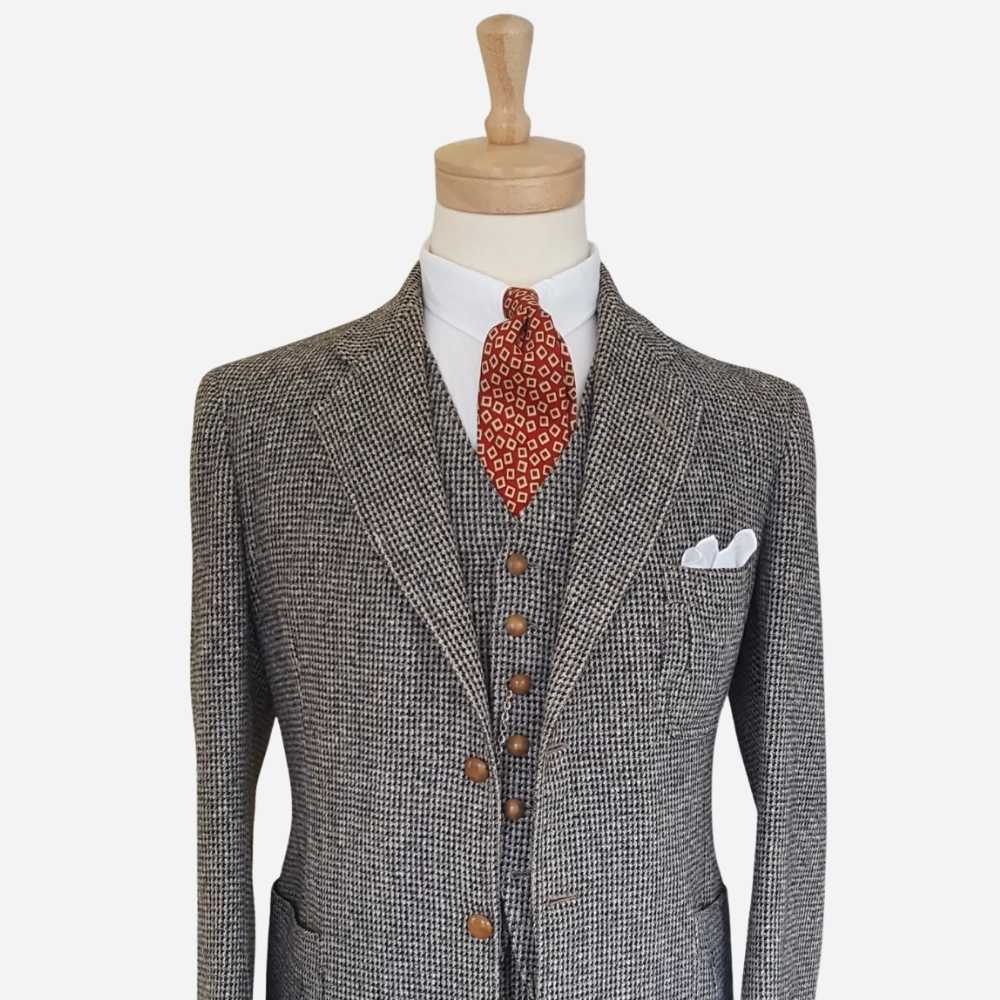


0 Commentaires